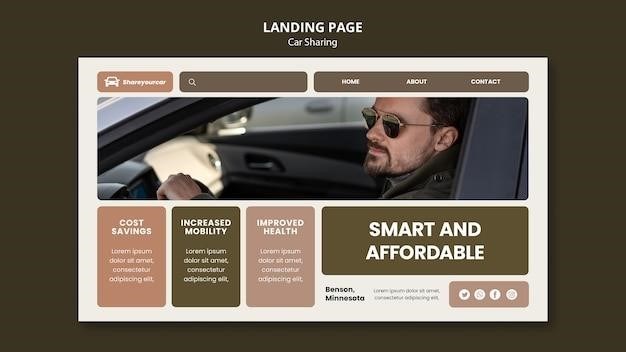Pre-Employment Physical Form PDF⁚ An Overview
A Pre-Employment Physical Form PDF is a document used by employers to assess a candidate’s physical health before they begin working. This form collects medical information to determine if an individual is fit for a specific job and to prevent overworking employees with pre-existing medical conditions‚ ensuring both safety and legal compliance.

Purpose of a Pre-Employment Physical
The primary purpose of a pre-employment physical is to evaluate a job applicant’s health and physical abilities to ensure they can perform the essential functions of the job safely and effectively. This assessment helps employers determine if a candidate’s physical condition aligns with the job’s demands‚ reducing the risk of workplace injuries and related liabilities. Additionally‚ it ensures compliance with legal guidelines like the Americans with Disabilities Act (ADA)‚ preventing discrimination by focusing on job-related abilities rather than disabilities.
Furthermore‚ pre-employment physicals identify any pre-existing medical conditions that could be aggravated by the job‚ allowing employers to make necessary accommodations or provide appropriate support. This proactive approach fosters a healthier and safer work environment‚ benefiting both the employer and employee. By collecting comprehensive medical information‚ employers can also establish a baseline of an employee’s health‚ which is useful for future worker’s compensation claims or health-related issues that may arise during their employment. Overall‚ the pre-employment physical serves as a critical step in the recruitment process‚ promoting safety‚ legal compliance‚ and a healthy workforce.

Information Collected on the Form
The pre-employment physical form gathers personal details‚ medical history‚ and physical examination results. This includes past illnesses‚ surgeries‚ current medications‚ and assessments of vital signs‚ vision‚ and physical abilities to determine job suitability and ensure workplace safety.
Personal Information
The “Personal Information” section of a pre-employment physical form PDF typically includes essential identifying details about the job applicant. This data is crucial for record-keeping‚ communication‚ and ensuring accurate identification throughout the hiring and onboarding processes. The specific fields in this section usually encompass the applicant’s full legal name‚ including first name‚ middle name (if applicable)‚ and last name.
In addition to the applicant’s name‚ the form will also request their date of birth‚ which is vital for verifying age and ensuring compliance with labor laws. Contact information is another key component‚ with fields for the applicant’s current address‚ phone number‚ and email address. This information enables the employer to reach the applicant for scheduling appointments‚ sending important updates‚ and providing necessary documentation. Furthermore‚ the form may include a section for the applicant’s gender‚ which is collected for demographic purposes and to ensure appropriate medical assessments are conducted during the physical examination.
Collecting accurate personal information is paramount to maintaining organized and reliable records‚ as well as ensuring that all communication and procedures are handled efficiently and effectively. This section lays the foundation for the rest of the form‚ providing the necessary context for the applicant’s medical history and physical examination results.
Medical History
The “Medical History” section of a pre-employment physical form PDF is designed to gather comprehensive information about the applicant’s past and present health conditions. This section is critical for employers to understand any potential health risks or limitations that may affect the applicant’s ability to perform the job safely and effectively. It typically includes questions about previous illnesses‚ injuries‚ surgeries‚ and hospitalizations.
Applicants are usually asked to disclose any chronic conditions they may have‚ such as diabetes‚ asthma‚ heart disease‚ or epilepsy. The form also inquires about allergies to medications‚ foods‚ or environmental factors‚ as well as any current medications being taken‚ including dosage and frequency. A detailed medical history helps healthcare professionals assess the applicant’s overall health status and identify any potential areas of concern.
Additionally‚ the “Medical History” section often includes questions about family medical history‚ particularly regarding hereditary conditions that may pose a risk to the applicant’s health. Applicants may also be asked about their history of mental health issues‚ substance abuse‚ and any history of infectious diseases. Providing accurate and complete information in this section is essential for ensuring that the employer can make informed decisions about the applicant’s suitability for the job and provide appropriate accommodations if necessary.
Physical Examination Details
The “Physical Examination Details” section of a pre-employment physical form PDF documents the findings of a thorough physical assessment conducted by a healthcare professional. This part of the form captures objective data about the applicant’s current physical condition‚ providing a snapshot of their overall health at the time of the examination. The details recorded help determine if the applicant meets the physical requirements of the job.
Typically‚ this section includes measurements of vital signs such as blood pressure‚ heart rate‚ and respiratory rate. Height and weight are also recorded to calculate the Body Mass Index (BMI). The examination covers various systems of the body‚ including cardiovascular‚ respiratory‚ musculoskeletal‚ and neurological. The healthcare provider will note any abnormalities or deviations from the norm in each system.
Vision and hearing tests are also commonly included to assess sensory functions. Depending on the job requirements‚ specific tests may be performed to evaluate strength‚ flexibility‚ and range of motion. The “Physical Examination Details” section serves as a critical component of the pre-employment physical‚ providing objective evidence to support the healthcare provider’s assessment of the applicant’s physical fitness for the job. Any findings that could impact the applicant’s ability to perform essential job functions are carefully documented for further consideration.
Legal Guidelines and ADA Compliance
Pre-employment physicals are subject to strict legal guidelines‚ primarily governed by the Americans with Disabilities Act (ADA). The ADA prohibits employers from requiring medical examinations before a job offer is extended. This provision aims to prevent discrimination against individuals with disabilities. Once a conditional job offer has been made‚ an employer can require a medical examination if it is job-related and consistent with business necessity.
The ADA also mandates that all applicants in the same job category must be subjected to the same medical examinations. The information obtained from the physical examination must be kept confidential and stored separately from other personnel records. Employers are restricted from using the medical examination to disqualify candidates unless the physical condition directly impacts their ability to perform essential job functions‚ even with reasonable accommodations.
Furthermore‚ employers must demonstrate that any exclusionary criteria based on medical findings are job-related and consistent with business necessity. It is crucial for employers to consult legal counsel to ensure their pre-employment physical practices comply with the ADA and other relevant federal and state laws to avoid potential legal challenges and ensure fair hiring practices. Compliance ensures a non-discriminatory environment.
Benefits for Employers
Implementing pre-employment physicals offers several key benefits for employers. Firstly‚ it helps ensure that potential employees are physically capable of performing the essential functions of the job. This reduces the risk of on-the-job injuries and related workers’ compensation claims‚ leading to lower insurance premiums and reduced operational costs. By identifying potential health issues early on‚ employers can make informed decisions about job placement and necessary accommodations.
Secondly‚ pre-employment physicals contribute to a healthier and more productive workforce. Employees who are physically fit and free from underlying medical conditions are more likely to maintain consistent attendance and perform their duties efficiently. This can lead to increased overall productivity and improved morale within the workplace. Additionally‚ these physicals provide a baseline health assessment for new hires‚ which can be valuable for future health monitoring and wellness programs.
Finally‚ conducting pre-employment physicals helps employers comply with legal and regulatory requirements‚ particularly in industries with specific health and safety standards. Documenting the health status of employees at the time of hire can protect the company from potential liability related to pre-existing conditions or injuries. By adhering to ADA guidelines and other relevant laws‚ employers can create a fair and legally sound hiring process‚ fostering a positive and compliant work environment.

Benefits for Employees
Pre-employment physicals offer several advantages for employees as well. Primarily‚ these physicals provide a comprehensive assessment of their current health status‚ often uncovering previously unknown medical conditions or potential health risks. This early detection allows individuals to seek timely medical intervention and make informed decisions about their health and well-being‚ leading to better health outcomes and improved quality of life.
Secondly‚ pre-employment physicals ensure that employees are placed in roles that align with their physical capabilities. This reduces the risk of work-related injuries and strains by preventing them from being assigned tasks that could exacerbate existing conditions or exceed their physical limitations. By promoting a safe and healthy work environment‚ employers demonstrate a commitment to employee well-being‚ fostering a sense of security and trust.
Finally‚ these physicals serve as a valuable baseline for future health monitoring. Employees can track changes in their health over time and identify potential issues early on. This proactive approach to healthcare empowers employees to take control of their health and make informed decisions about lifestyle choices and preventive measures. Ultimately‚ pre-employment physicals contribute to a healthier‚ more engaged‚ and more productive workforce‚ benefiting both the individual and the organization.
Where to Find Pre-Employment Physical Form Templates
Locating pre-employment physical form templates is generally straightforward‚ thanks to the abundance of resources available online. Numerous websites offer these templates‚ often tailored to specific industries or job roles. Employers can begin their search by exploring human resources websites‚ which commonly provide a range of downloadable forms and templates designed to streamline various HR processes‚ including pre-employment health assessments.
Another valuable source is online legal form providers. These platforms offer a variety of legal documents‚ including pre-employment physical forms‚ that are professionally drafted and compliant with relevant regulations. Many of these providers offer both free and paid templates‚ allowing employers to choose the option that best suits their needs and budget. Additionally‚ industry-specific organizations and associations often provide members with access to customized templates that are tailored to the unique requirements of their field.
It’s crucial to ensure that any template used is up-to-date and compliant with all applicable federal and state laws‚ including ADA guidelines. Consulting with legal counsel or an HR professional can help employers verify the suitability of a template and ensure that it meets their specific needs. By utilizing these resources‚ employers can efficiently obtain pre-employment physical form templates that are both effective and legally sound.

Completing the Form⁚ A Step-by-Step Guide
Completing a pre-employment physical form requires careful attention to detail to ensure accuracy and completeness. Begin by carefully reading all instructions provided on the form. The first step typically involves filling out personal information‚ including full name‚ date of birth‚ contact details‚ and emergency contact information. Ensure all details are legible and accurate to avoid any confusion during processing.
Next‚ thoroughly complete the medical history section. Provide detailed information about past illnesses‚ surgeries‚ allergies‚ and current medications. It’s crucial to be honest and comprehensive to give the healthcare provider a clear understanding of your health background. If you are unsure about any information‚ consult with your personal physician before completing the form.
During the physical examination portion‚ cooperate fully with the healthcare provider. Be prepared to answer questions about your lifestyle‚ including smoking‚ alcohol consumption‚ and exercise habits. The provider will conduct various tests‚ such as blood pressure checks‚ vision and hearing screenings‚ and possibly drug tests. Ensure you understand the purpose of each test and feel comfortable asking questions if anything is unclear. Finally‚ review the completed form to confirm all information is accurate before signing and dating it.
Digital Alternatives to PDF Forms
In today’s digital age‚ several alternatives to traditional PDF forms for pre-employment physicals offer enhanced efficiency and security. Online form builders‚ such as 123FormBuilder‚ provide customizable templates that can be easily filled out and submitted electronically‚ reducing the risk of human error and security vulnerabilities associated with paper-based forms. These platforms often include features like electronic signatures‚ automated data validation‚ and secure data storage‚ ensuring compliance with privacy regulations.
Moreover‚ digital solutions streamline the entire process by enabling seamless communication between candidates‚ employers‚ and healthcare providers. Instead of manually printing‚ scanning‚ and emailing forms‚ all parties can access and update information in real-time through a centralized online portal; This not only accelerates the completion of the pre-employment physical but also improves data accuracy and reduces administrative overhead.
Furthermore‚ many digital platforms offer mobile-friendly interfaces‚ allowing candidates to complete forms on their smartphones or tablets. This flexibility enhances convenience and accessibility‚ particularly for remote workers or individuals with limited access to computers. By embracing digital alternatives‚ companies can modernize their pre-employment processes‚ improve data management‚ and create a more efficient and user-friendly experience for all stakeholders.
Customization of Pre-Employment Physical Forms
Customizing pre-employment physical forms is crucial for employers to gather specific health information relevant to the job’s requirements. Standard templates may not adequately address the unique physical demands or potential hazards associated with particular roles‚ necessitating tailored questionnaires and examination protocols. By customizing these forms‚ employers can ensure that they are collecting the most pertinent data to assess a candidate’s fitness for duty and mitigate potential risks.
The customization process should involve collaboration between human resources‚ safety professionals‚ and medical experts to identify the essential health parameters to evaluate. This may include adding sections to assess specific physical abilities‚ such as lifting capacity‚ visual acuity‚ or respiratory function. Additionally‚ employers may need to incorporate questions about pre-existing conditions or medications that could impact an employee’s ability to perform their job safely and effectively.
Furthermore‚ customized forms should comply with all applicable legal guidelines and regulations‚ including the Americans with Disabilities Act (ADA). Employers must avoid asking questions that could be considered discriminatory or that violate an individual’s privacy rights. By carefully tailoring pre-employment physical forms‚ employers can ensure that they are gathering the necessary information to make informed hiring decisions while also protecting the rights and well-being of their employees.









